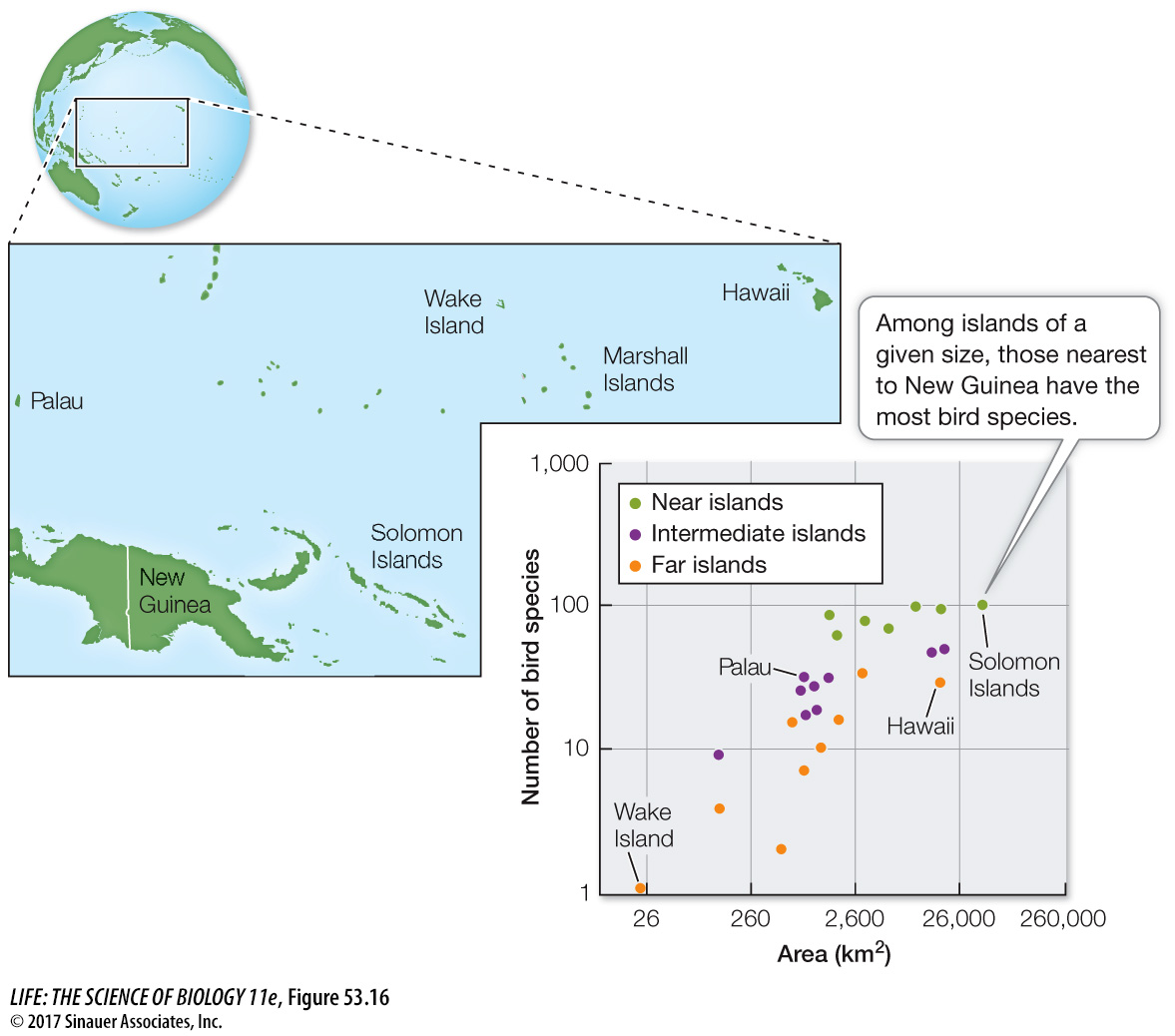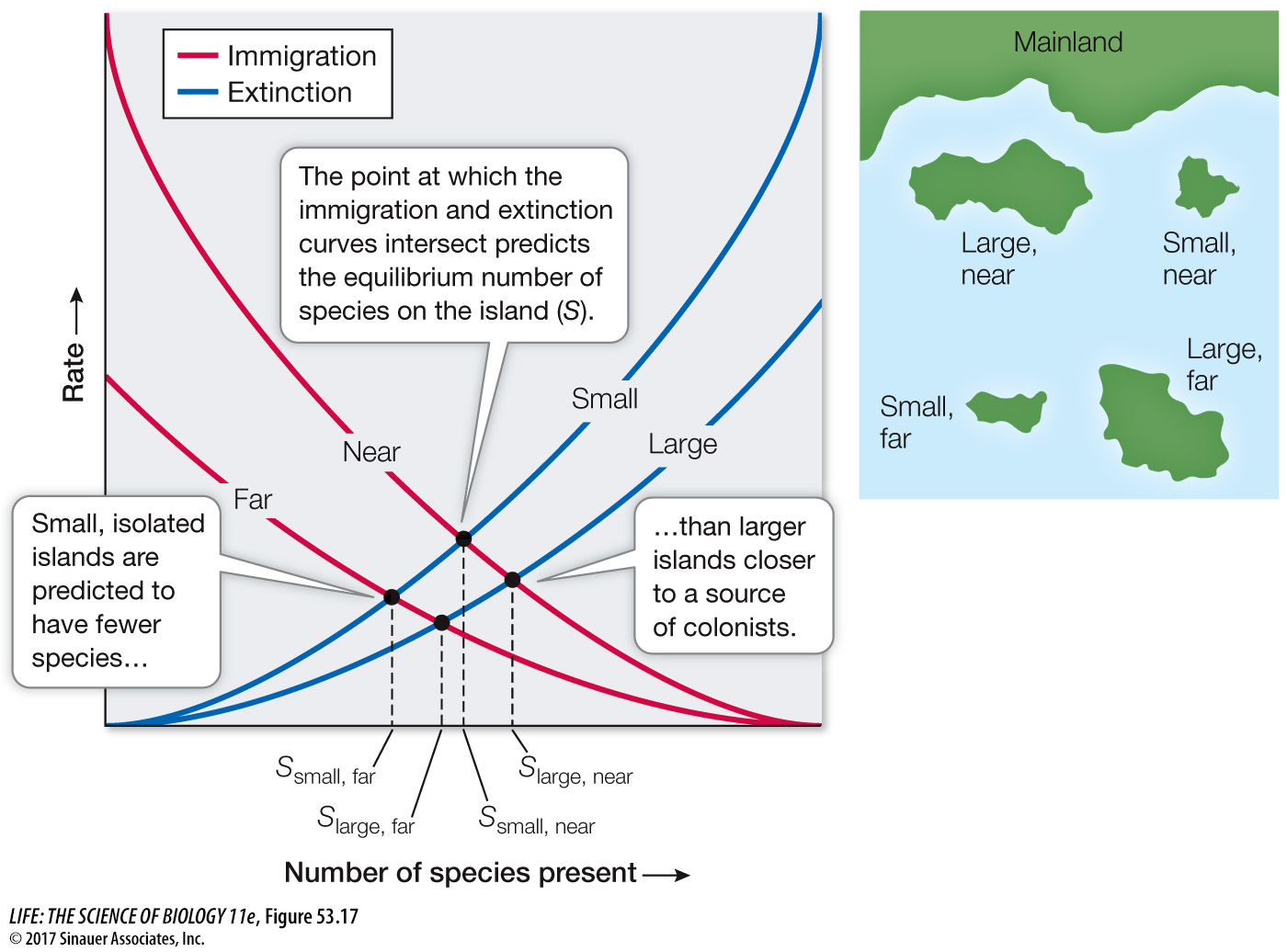key concept
53.5
Geographic Area and Humans Affect Regional Species Diversity
key concept
53.5
Geographic Area and Humans Affect Regional Species Diversity
Biogeographers have repeatedly documented what is termed the species–
focus your learning
The species–
area relationship is explained by the theory of island biogeography, which considers the balance between species immigration and extinction. As humans fragment Earth’s biomes through agriculture, deforestation, and urbanization, remaining habitats become more isolated, or islandlike.

The biologist Edward O. Wilson was struck by the species–

Activity 53.4 Biogeography Simulation
The rate of immigration is determined in part by the number of species in the regional species pool. In the case of oceanic islands, the species pool comprises all the species on the nearest mainland location. Not all species that reach the island will persist there, however. The more species there are on an island, the greater the likelihood that some will go extinct, either due to chance or the inability to coexist with other species on the island. The number of species that will be sustained on any particular island is determined by the balance of the immigration rate and the extinction rate for that island. Even though species will come and go over time (i.e., immigrate and become extinct), that turnover will always result in some equilibrium number of species, assuming a constant species pool and natural extinction events.
The actual number of species on an island will ultimately depend on two factors:
The size (area) of the island. The smaller the island, the fewer resources it provides, the greater the potential for competition, and the higher the extinction rate will be (see Figure 53.17). Larger islands provide greater resources and can sustain larger populations (which tend to have lower extinction rates than small populations).
Distance of the island from the species pool. The farther the island is from the source of immigrants, the lower the immigration rate—
the rate at which new species arrive— will be (see Figure 53.17).
Between 1966 and 1969, Wilson and his student Daniel Simberloff conducted an experiment to test the theory of island biogeography, using arthropods living on mangrove islands in the Florida Keys. You can view this experiment and the results online.
Animation 53.3 Island Biogeography in the Florida Keys